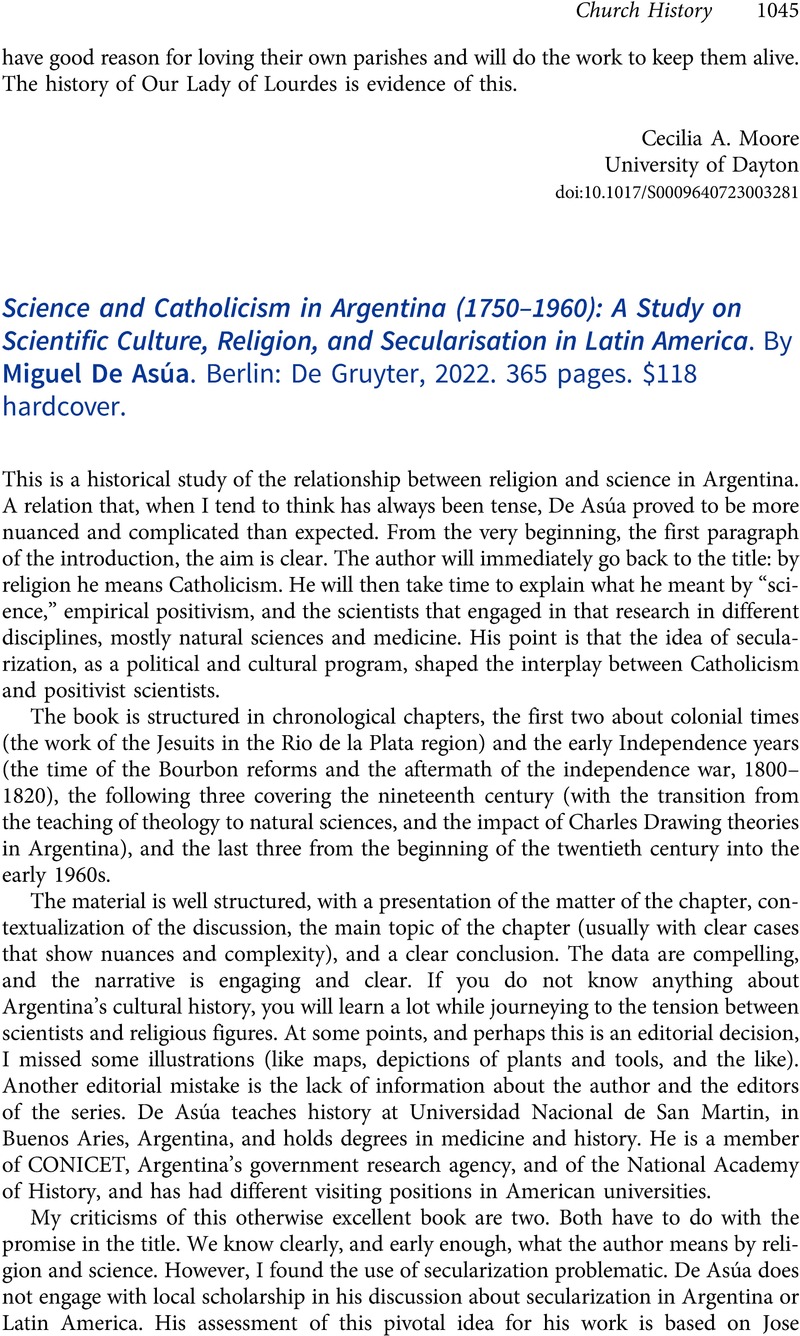No CrossRef data available.
Article contents
Science and Catholicism in Argentina (1750–1960): A Study on Scientific Culture, Religion, and Secularisation in Latin America. By Miguel De Asúa. Berlin: De Gruyter, 2022. 365 pages. $118 hardcover.
Review products
Science and Catholicism in Argentina (1750–1960): A Study on Scientific Culture, Religion, and Secularisation in Latin America. By Miguel De Asúa. Berlin: De Gruyter, 2022. 365 pages. $118 hardcover.
Published online by Cambridge University Press: 19 March 2024
Abstract
An abstract is not available for this content so a preview has been provided. Please use the Get access link above for information on how to access this content.

- Type
- Book Reviews and Notes
- Information
- Copyright
- Copyright © The Author(s), 2024. Published by Cambridge University Press on behalf of American Society of Church History


